Champions of Change Blog
The Stories Plants Can Tell: NEON’s Project BudBurst
Posted by on June 25, 2013 at 11:18 AM EDT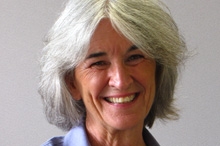
Sandra Henderson is being honored as a Champion of Change for her dedication to increasing public engagement in science and science literacy.
Every plant has a story to tell. At my home in Erie, Colorado, I monitor a variety of plants including Common lilac, Quaking aspen, and Red columbine. Each morning feels like a little treasure hunt as I make my rounds to check out the plants! As one of the founders of NEON’s Project Budburst, I was able to combine my longtime experience in climate change education with my passion for plants. I am honored to accept this “Champion of Change” recognition on behalf of the Project BudBurst community and the legion of citizen scientists who are making a difference.
Project BudBurst was founded on the premise that every plant has a story to tell about our changing climates. We can empower people to better understand their surrounding ecosystems by actively engaging them in observing plants. Why are plants so important in understanding changing climates? Because plants are everywhere we live and they respond in predictable ways to changes in their environment -- variations in temperature, precipitation, and day length. If we take the time to observe them as “scientists,” we can learn a lot, not only about plants, but also about how the world around us works. Imagine if every person in the US ‘adopted a plant’ and reported the timing of leafing, flowering and fruiting on the Project BudBurst web site.
As the Director of Citizen Science at the NSF-funded National Ecological Observatory Network (NEON), I work with scientists, engineers, and educators who are very excited about continental-scale ecological data. NEON will provide 30 years of data on the effects of climate change, land-use change, and invasive species on natural resources and biodiversity. Project BudBurst participants complement the work done at NEON by encouraging people to go outside and make simple observations of plants; we essentially engage them as ‘human sensors.’ This continental-scale network of human sensors is helping to advance the frontiers of ecological science as well as increasing awareness of ecological processes and science in general.
It really does take a village to create and implement a national citizen science program. Making a continental-scale program relevant at the local level requires partnerships and collaborations with schools, universities, and other educational organizations. Project BudBurst has been working with staff and volunteers from agencies such as the US Fish and Wildlife Refuge System, the National Park Service, and botanic gardens, including the US Botanic Garden and the Chicago Botanic Garden. We are actively engaged in expanding our partner network to include museums and science centers. We are partners in the National Geographic Society’s FieldScope. To expand our participant base, we are now partnering with BioTracker to create a mobile app game called Floracaching – based on the popular geocaching activity but using plants as the ‘cache.’
One of the most exciting results of this program is that Project BudBurst data are being used by scientists! My friend and colleague, Kayri Havens-Young of the Chicago Botanic Garden, compared Project BudBurst data for 15 plants species to historical plant data from Chicago. Seven of the plant species had a first flower earlier in one or more of the last three years than had been seen during 1950-1994. In some cases, the first flower was several weeks earlier. These species included forsythia, spiderwort, dogtooth violet, red maple, may apple, common lilac, and black locust. Plants really do have a story to tell us about changes in the environment. With your help, we can collect more plant stories to better understand our changing environment.
Visit budburst.org to learn how to participate or become a partner.
Sandra Henderson is the Director of Citizen Science at the National Ecological Observatory Network (NEON).
Learn more about ServiceConnecting People to Nature
Posted by on June 25, 2013 at 11:13 AM EDT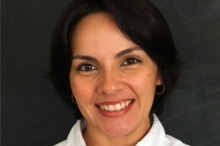
Lee Ann Rodríguez is being honored as a Champion of Change for her dedication to increasing public engagement in science and science literacy.
I was introduced to the concept of citizen science around five years ago, after being drawn into an NSF-funded project of my organization. Looking back to that moment, and although I was not familiar with this concept at the time, I was captivated by the opportunity to be part of something so unique that could have a meaningful impact on individuals of all walks of life.
Our Citizen Science project aimed at engaging individuals as participants in research that would expand our knowledge of the ecological inventory and interactions within our Hacienda La Esperanza Nature Reserve. We were able to complete that goal by the end of the project, but what was really fulfilling was that we achieved so much more than that: we created a group of citizens brought together by science and by an extraordinary sense of community.
Children as young as nine joined seniors as ripe as ninety-two in learning and sharing their knowledge about nature and the services it provides. Students and school dropouts, working professionals and unemployed from diverse disciplines, they all chose to be part of a movement presenting an inclusive alternative to doing science.
Many applied their citizen science experience to academic and career choices, and others to community issues or everyday life situations. But what’s really amazing is that most came back, time after time to keep the movement alive, and that many are still active in our organization and in their communities through volunteerism, leadership, and collaborations.
More than a tool of informal science education, citizen science has proven to be a system where individuals can connect to others and to nature through science. I am honored to be a White House Champion of Change, and I am so proud to work hand-in-hand with my organization’s staff and citizen scientists to make it all happen.
Lee Ann Rodríguez is Para la Naturaleza’s Development Manager. Her organization is the new unit of the Conservation Trust of Puerto Rico, a non-profit dedicated to land conservation in the islands of Puerto Rico.
Lee Ann Rodríguez is the DBAc in Resource Development Manager at the Conservation Trust of Puerto Rico.
Learn more about ServiceCitizen Science – Bringing the Excitement of Scientific Discovery to All
Posted by on June 25, 2013 at 11:10 AM EDT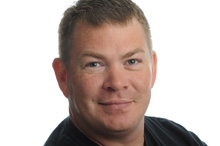
Jason Osborne is being honored as a Champion of Change for his dedication to increasing public engagement in science and science literacy.
It was late Friday morning when I received a phone call from the Executive Office of the President, Office of Science and Technology Policy. I will never forget how surreal it was when a woman on the other end said “Congratulations, on behalf of The White House you have been chosen as a Citizen Science Champion of Change.” My heart began to pound as I replied, “I can’t believe this is happening, I don’t know what to say… thank you so much.” What an amazing country we live in, to be an average citizen and recognized by The White House for my contribution to citizen science.
I was raised on a farm in south central Pennsylvania where rolling hills are carpeted with crops, and livestock is dispersed throughout the countryside. It wasn’t hard to let your mind wander. I was always curious and remember, as a child, sitting along a creek bank cracking open slabs of slate to unveil earths past. Amazed, I would study the inclusions of fossil shell casts riddled along the surface of the rock face. Later in life I took this passion for discovery to a whole new level.
In February 2010, along with Aaron Alford, I co-founded Paleo Quest, a non-profit citizen science service and research organization whose mission is to advance the sciences of paleontology and geology through research, exploration and science education. Paleo Quest is an original, collaborative platform that brings together professional-amateurs, professionals and citizen scientists in a variety of disciplines, providing a greenhouse for scientific innovation. The organization’s novel approach to science has helped Paleo Quest members identify and answer unique scientific and methodological questions in paleontology and stratigraphy.
Science education in America is thirsting for novel approaches that increase science literacy. Citizen science projects offer the opportunity for participants to become explorers and help unlock Earth’s mysteries. Aaron and I have designed several citizen science programs, including SharkFinder™. True to its name, SharkFinder™ is aimed at finding fossil elasmobranch (shark, skates and ray) remains in the Atlantic Coastal Plain of the United States. To date, elasmobranches have been poorly characterized, despite the fact that shark fossils from in the Atlantic Coastal Plain region have been a favorite of collectors and paleontologists for more than a century. SharkFinder™ allows classrooms and citizen scientists to search through highly concentrated fossil-bearing media to find and report elasmobranch fossils. In return, participants who make significant finds are acknowledged in professional publications and may have the opportunity to name new species.
America was built on discovery and innovation. Citizen Science can play a key role, whether it’s helping to find a cure for a disease, understanding human DNA, the microbes within us, the universe around us, or making fossil discoveries that could help us understand evolution, species diversity and climate change.
Unleash the scientist within you, venture into the world of discovery, and you never know…YOU could be recognized for your contribution.
Jason Osborne is the President and Co-Founder of Paleo Quest.
Learn more about ServiceSoldiers2Scientists and Beyond...
Posted by on June 25, 2013 at 11:08 AM EDT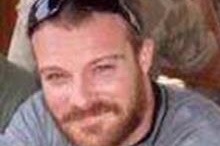
Michael P. Cohn is being honored as a Champion of Change for his dedication to increasing public engagement in science and science literacy.
Researchers have noted that, “a focus on healthy lifestyle behaviors that can facilitate a transition back into civilian life” is often missing from many treatment approaches for mental illness, particularly post-traumatic stress disorder (PTSD) and other deployment-related set-backs. Furthermore, fear of stigma associated with asking for help may keep many veterans from seeking the care they need for the negative effects caused by stress, isolation, and lack of structure associated with returning home from deployment. Therapeutic recreation therapy may provide solutions for both of these problems as well as open up enormous opportunities in many others.
Therapeutic recreation programs are uniquely suited to provide veterans treatment, while also helping individuals “recover basic motor functioning and reasoning abilities, build confidence, and socialize effectively to enable greater independence” (US Department of Veterans Affairs, 2009). For instance, results from a pilot study of therapeutic fly fishing for veterans with PTSD were promising, and demonstrated the utility of the program in: 1) reducing “re-experiencing” of traumatic events; 2) reducing psychological numbing and increasing social connectedness; and 3) calming hyper-arousal through physical activity and peaceful surroundings (Dustin et al., 2011).
I, personally, have experienced the healing and restorative power of a day spent in the wilderness. After returning home from a yearlong stint in Afghanistan, I experienced some of the difficulties of re-integration described by many veterans when they transition back to life after deployment. During this time, I began to re-engage with my childhood hobbies of fishing and birding. I found myself invigorated by my outdoor experiences, with a renewed sense of focus and purpose. The more I engaged in the activity, the more I was able to get out of it, the more I knew what I didn't know but wanted to. I soon wanted to make more of a commitment, wanting, not necessarily more meaning from the activities, but more reason and purpose to share it with others. This led me to make contact and then begin to work with the many platforms and projects sponsored by the Cornell Lab of Ornithology, that work to develop and integrate information and mobile technologies to track birds in their natural habitats.
In working with Cornell, I became aware of the burgeoning field of Citizen Science. Cornell prioritizes educating participants and providing them with easy to use, accessible, web-based tools to track ecological data. Research teams based in government organizations, private firms, or educational institutions stand to gain much from the involvement of citizen scientists, due to the low costs and minimal training required to implement wide-spread ecological tracking programs.
As I have learned more about Citizen Science, I have become convinced of the potential for the field to contribute to the engagement and treatment of returning veterans. By combining outdoor recreation with scientifically oriented, purpose-driven activities (like, for example, bird tracking), veterans can enjoy the benefits of therapeutic recreation, while also directly contributing to the conservation, rehabilitation, and advancement of American wildlife and wild spaces. In this way, veterans can continue their service to the country by way of Citizen Science. Researchers and others that are not, or cannot be in the field are nevertheless empowered by the range of data collected and are able to produce findings that would not be possible without the effort of Citizen Scientists and the mobile technologies, which bring them together and demonstrate the singular purpose.
The vision of Soldiers2Scientists, I believe, makes a pretty compelling case for Veterans and Wounded Warriors to team with the Department of Interior and National Park Service, along with multiple local, state, and national agencies, and together with Cornell's Ornithology Lab, The American Kestrel Project, Audubon and many others, across the country and beyond, to identify important scientific and conservation requirements which can then be provided as a citizen science project to returning soldiers, as a way to decompress in the Great American Outdoors, while at the same time, conducting meaningful work that serves to protect and preserve our country’s resources.
Taken together with the growing army of citizen scientist volunteers across the country, and with the accessibility, applicability, and mobility of many citizen science-related technologies, I think we are just beginning to understand the scope of the potential and socio-historical implications for the democratization of scientific inquiry and research!
Michael P. Cohn is the Founder of Soldiers2Scientists.
Learn more about ServiceHacking Science and Space Exploration
Posted by on June 25, 2013 at 10:09 AM EDT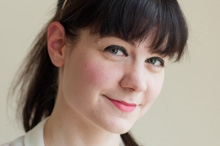
Ariel Waldman is being honored as a Champion of Change for her dedication to increasing public engagement in science and science literacy.
Science should be something that is disruptively accessible. Citizen science is less about replicating science experiments and more about people from any background being empowered to create new ways to explore the overlooked, underfunded and fringe areas of science. Unfortunately, the relationship most adults have with scientific exploration is one of observation: watching government agencies and scientists explore on behalf of us, but not actually exploring it ourselves.
That was my relationship with space exploration prior to 2008. That year, I was watching a documentary on the Discovery Channel, called When We Left Earth, and I became so inspired by it that I decided to randomly send NASA an email, volunteering myself to help in case they ever needed someone like me. I have no formal science background; my degree is in graphic design and I had been working at an ad agency for a number of years. Serendipitously, I got a job at NASA from that email. Never having expected to work at NASA, the experience was life changing – setting me on a mission to enlighten others that they, too, can actively contribute to science.
After NASA, I created Spacehack.org, a directory of ways to participate in space exploration. From discovering galaxies to building spacecrafts, Spacehack.org catalogs how anyone can actively contribute to scientific discovery and exploration. There has been a considerable movement in the last few years to make science more open between scientific disciplines and to the perceived “public”. But simply making science open – by placing datasets, research, and materials online and using open source licensing – is only half the battle. Open is not the same as accessible.
Open science materials are often very cryptic or are buried deep within a government website where they’re not easy to find. You only need to look at projects on Spacehack.org, like Galaxy Zoo, to understand the importance of making science accessible. The Sloan Digital Sky Survey had opened up their data, but it wasn’t until Zooniverse, the group behind Galaxy Zoo, created a thoughtful interface for it that it truly became accessible for hundreds of thousands of people to interact with it and actively contribute to scientific discovery through it. So how can we continue to make science more disruptively accessible across all science disciplines, geographies, industries and skill-sets?
Born out of this frustration that there's actually quite a bit of open science "stuff" but no one is actually doing anything interesting with it, came an event called Science Hack Day. Science Hack Day is a 48-hour-all-night event that brings together designers, developers, scientists and other enthusiastic geeks in the same physical space for a brief but intense period of collaboration and building cool, weird, amazing things. A hack is a unique modification, an interesting mashup or a quick solution to a problem – maybe not the most elegant solution, but often the cleverest. You don't need to be a scientist or a hacker to attend, you just need to get excited and make things with science. By having a fresh set of eyes from those who solve different types of problems across a variety of industries inside and outside of science, new concepts often emerge and can go on to influence science and adults’ relationship to science in unexpected ways.
I am the global instigator for Science Hack Day – working with passionate people in countries around the world who want to organize a Science Hack Day in their own city. There's an open source set of instructions for how anyone can create a Science Hack Day at http://sciencehackday.com. I am incredibly amazed to be included as a Champion of Change in Citizen Science. I never imagined I could work at NASA and I never imagined I would be honored by the White House for sharing my excitement about science and space exploration. Through hacking, anyone can actively contribute to science, and often in surprising new ways.
Ariel Waldman is the Founder of Spacehack.org.
Learn more about ServiceCOASST – It Takes a Village
Posted by on June 25, 2013 at 9:59 AM EDT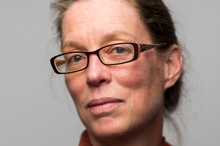
Julia K. Parrish is being honored as a Champion of Change for her dedication to increasing public engagement in science and science literacy.
In 1991, the freighter Tuo Hai collided with the Tenyo Maru, a fishing vessel plying the cold, rich waters just off the southern coast of Vancouver Island, British Columbia. The ensuing oil spill smeared down the pristine outer coast of Washington State, coating beaches in Olympic National Park as well as lands belonging to the Makah, Quileute, Quinault, and Hoh Tribal Nations. At the time, I was a “fledgling scientist” who happened to be working on Tatoosh Island, a rocky outcrop standing sentinel to the Strait of Juan de Fuca, entry point to Seattle and Vancouver, Puget Sound and the Salish Sea. It was a warm, foggy day, and the sea was calm. I stood on the rocks, listening to the sound of wings slapping water as oil-soaked birds literally rowed to shore. Their fate was sealed—and in a very different way, mine was too.
When a disaster happens in our coastal waters, how do we measure its impact? How do we know what is normal, what is right? And more to the point, how do we prove it? In the world of professional science, we will never have enough people, time, or dollars to get the job done – to completely know every part of the natural world, or how healthy, or broken, our ecosystems are. The world is too large, and we are too few. Simply put, scientists need help.
The Coastal Observation and Seabird Survey Team (COASST) was born out of the Tenyo Maru oil spill, out of the realization that scientists alone can’t begin to document what’s normal, let alone how fast things are changing. We need a willing army to make that happen. In short, we need citizens – the locals who watch, and know, and love their backyards, their environment.
In COASST, hundreds of citizens, from California to Alaska, work together with university and agency scientists to document coastal ocean health. And we do that by monitoring the number and type of birds washing up on the tide. Yup. Dead birds. What’s more, COASSTers collect evidence on every bird they find – what kind of foot; precise measurements of the beak, wing, and leg; carefully arranged photographs – allowing them, and independent experts, to use scientific deduction to correctly identify each bird to species. COASSTers get it right 85% of the time – and we can prove it. That makes COASST data immediately usable in science and resource management, and in a court of law.
Does COASST make a difference? Working with oceanographers and marine biologists, our volunteers documented the largest die-off of seabirds (over 8,000) due to a harmful algal bloom anywhere in the world, ever. That information assisted the Washington Wildlife Commission in setting duck hunting limits for bloom-affected species. Our data have also established critical baselines for other sources of mortality, from oil spills to changing climate.
And here’s the thing – if almost a thousand people are willing to survey their coastline for beachcast birds every month, some of them driving and hiking for hours to get there, all of them relegated to the weather the weekend throws at them, just imagine how many thousands of people we could engage in, let’s just say, slightly less smelly pursuits.
They may be geeky, but that’s not to say COASSTers aren’t a social bunch. Nancy Karle recruited her mother Barbara Collins. Tom Hertzig recruited his wife, Connie. Sarah Swanson and Max Smith got married on their COASST beach. Issa Parker brings along her grandson Cedar Parker Pavitt. Gary and Lauren Lester take their Labrador retriever Enzo out to help survey. For his retirement party, Rainer Wieland invited his family and friends to his monthly COASST survey. COASST is about science, and about community. It’s about learning the natural history – the comings and goings, the seasons, the patterns, the species, the power of natural forces. It’s about documenting rightness, and wrongness, beyond a shadow of a doubt. And it’s about sharing that knowledge – with scientists, with community members, and with decision-makers.
In the last century, science was locked up in the ivory tower, practiced by university professors with PhDs who spoke a language that was important, if difficult for most people to understand. It’s no wonder students turned away from science and math. But science matters. Science can unlock how the world works, and can help solve the problems we face. In this century, citizens are getting back into the game. Not as scientists, but as an integral, and essential, part of the science team: the eyes and ears, the data collectors, the natural historians, and the witnesses of how the world is changing. Citizens and scientists working together is a powerful combination, deep in knowledge, broad in reach, and fiercely committed to the stewardship of the places they know and love. COASST is not a single person; it’s a village of dedicated staff (5), amazing undergraduate interns (12), and legions of coastal community members (850!!).
I’m proud to be a Champion of Change. It’s an honor I share with everyone in COASST, because I didn’t do it, we did.
Julia Parish is the Associate Dean of the College of the Environment at the University of Washington.
Learn more about Service
- &lsaquo previous
- …
- 52
- 53
- 54
- 55
- 56
- 57
- 58
- 59
- 60
- …
- next &rsaquo
White House Blogs
- The White House Blog
- Middle Class Task Force
- Council of Economic Advisers
- Council on Environmental Quality
- Council on Women and Girls
- Office of Intergovernmental Affairs
- Office of Management and Budget
- Office of Public Engagement
- Office of Science & Tech Policy
- Office of Urban Affairs
- Open Government
- Faith and Neighborhood Partnerships
- Social Innovation and Civic Participation
- US Trade Representative
- Office National Drug Control Policy
categories
- AIDS Policy
- Alaska
- Blueprint for an America Built to Last
- Budget
- Civil Rights
- Defense
- Disabilities
- Economy
- Education
- Energy and Environment
- Equal Pay
- Ethics
- Faith Based
- Fiscal Responsibility
- Foreign Policy
- Grab Bag
- Health Care
- Homeland Security
- Immigration
- Innovation Fellows
- Inside the White House
- Middle Class Security
- Open Government
- Poverty
- Rural
- Seniors and Social Security
- Service
- Social Innovation
- State of the Union
- Taxes
- Technology
- Urban Policy
- Veterans
- Violence Prevention
- White House Internships
- Women
- Working Families
- Additional Issues

